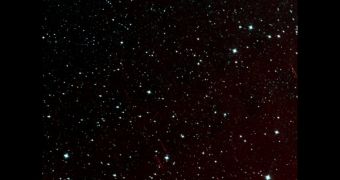Officials at NASA have just released the first image collected by the former Wide-field Infrared Survey Explorer (WISE) telescope, which studied the Universe in IR wavelengths from December 2009 to February 2011. In the meantime, scientists decided to resurrect it for a new science mission, which is scheduled to kick off soon.
The new leg of the mission is called Near-Earth Object Wide-field Infrared Survey Explorer (NEOWISE), and it will focus on surveying comets, meteorites, asteroids and other objects flying close to Earth's orbit (NEO). The spacecraft recently reopened its eyes, and snapped this photo of the sky.
The mission is managed by experts at the NASA Jet Propulsion Laboratory (JPL), in Pasadena, California. The spacecraft itself was built by Ball Aerospace, Lockheed Martin, the Space Dynamics Laboratory, and SSG Precision Optronics Inc. as the main contractors.
WISE took off aboard a Delta II delivery system, from the USAF Vandenberg Air Force Station, in California. Takeoff occurred at 14:09 UTC on December 14, 2009, and the telescope entered its Sun-synchronous polar orbit soon after, at an altitude of 525 kilometers (326 miles).
During its original mission, the probe used detectors in the 3.4, 4.6, 12 and 22 micrometer (μm) wavelength bands to create an all-sky survey of the Universe at infrared frequencies. As soon as the coolant system ran out of fuel, the mission was deactivated due to heating.
However, lack of coolant does not prevent the sensitive instruments on the spacecraft from observing cosmic objects a lot closer to home, inside the solar system. This is why NASA announced plans to recommission the spacecraft, in August 2013.
“NEOWISE not only gives us a better understanding of the asteroids and comets we study directly, but it will help us refine our concepts and mission operation plans for future, space-based near-Earth object cataloging missions,” says JPL NEOWISE principal investigator, Amy Mainzer.
“The spacecraft is in excellent health, and the new images look just as good as they were before hibernation. Over the next weeks and months we will be gearing up our ground-based data processing and expect to get back into the asteroid hunting business, and acquire our first previously undiscovered space rock, in the next few months,” she concludes.

 14 DAY TRIAL //
14 DAY TRIAL //